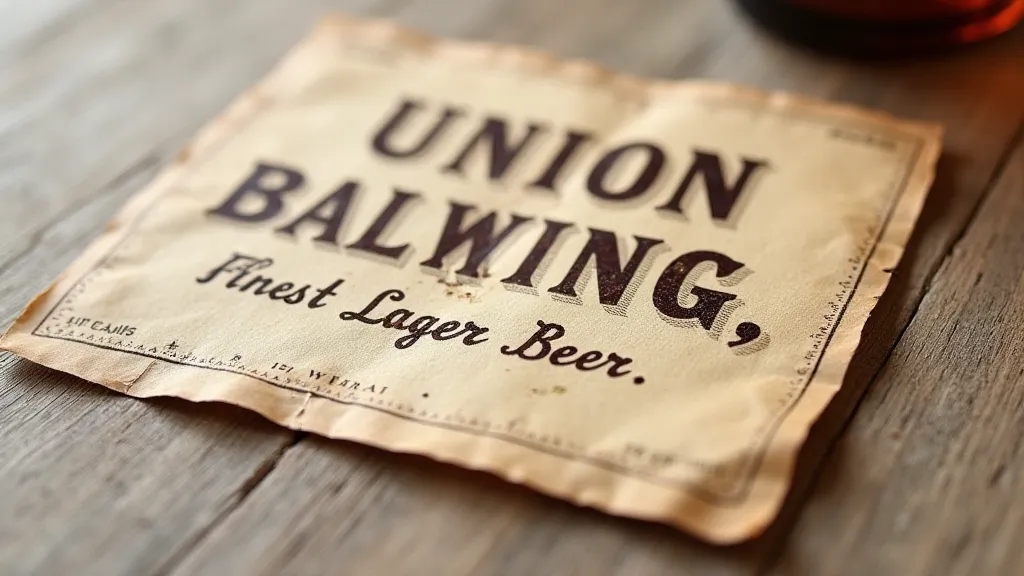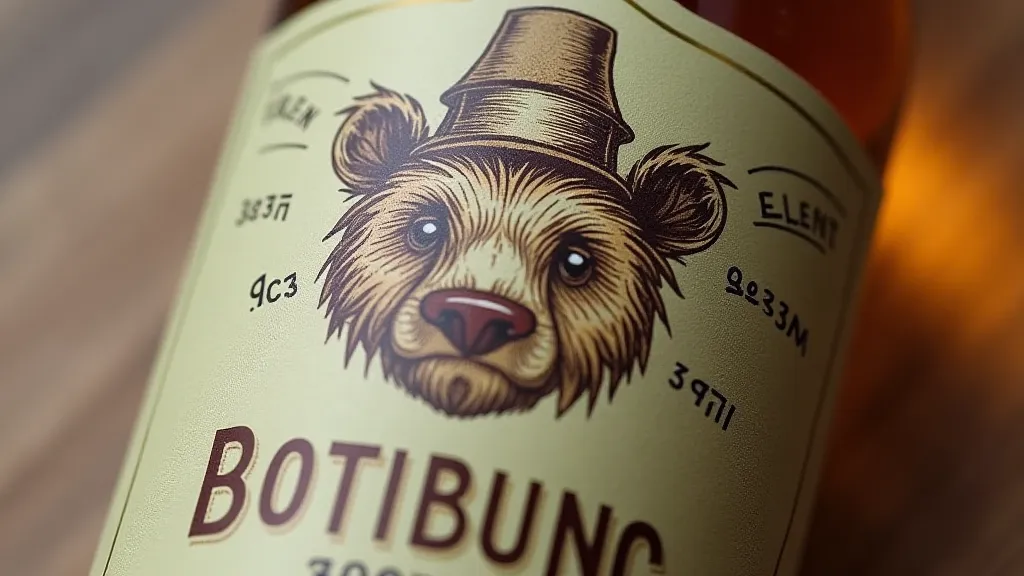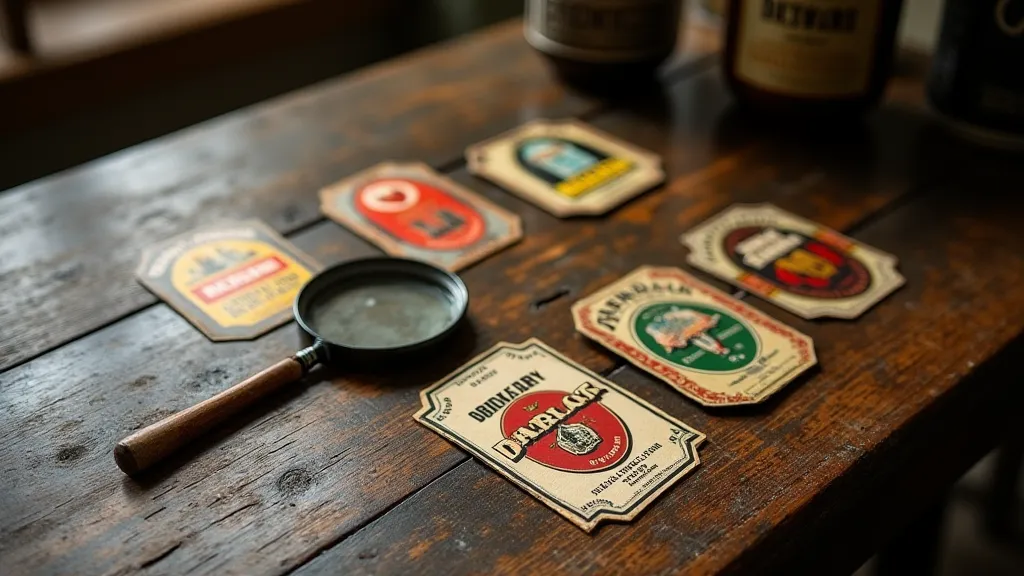Bottled Dreams: The Art of Labeling and the Branding of Local Breweries
The clink of glass, the foamy head, the satisfying gulp… these are the sensory experiences we associate with beer. But before that first taste, there's a visual encounter, a promise whispered from a label. More than just identifying a product, brewery labels are tiny canvases, each telling a story of heritage, ambition, and the meticulous crafting of a local treasure. They’re miniature windows into a world often forgotten – a world where artisanal tradition met burgeoning industrial innovation, and where the desire to create something truly unique fueled countless entrepreneurs.
My grandfather, a quiet man with calloused hands and a twinkle in his eye, collected accordions. Not pristine, showroom models, but well-loved instruments, each bearing the scars of countless melodies played in smoky dance halls and family gatherings. He’s explained to me that each accordion held a history, a story etched into the keys and bellows. I often felt the same way when I started looking at old brewery labels. The wear, the faded colors, the slight imperfections – they weren’t flaws; they were testaments to a product well-loved and widely consumed.
The Early Days: Simple Statements and Regional Pride
Early brewery labels, particularly those from the 19th and early 20th centuries, reflect a period of rapid industrialization and a burgeoning middle class eager for new leisure activities. They were often starkly functional. Imagine the breweries clustered around growing cities: Milwaukee, St. Louis, Rochester. These weren't about fanciful imagery. They were declarations of quality, straightforward pronouncements of what the brewery offered. Names like "Best Lager," "Family Brew," or simply the brewery's name in bold, traditional lettering were common. The focus was on trustworthiness and reliability. Think of the immigrant experience; many of these breweries were founded by German, Irish, and Polish families, seeking to recreate a taste of home and establish a foothold in a new land. The labels proudly proclaimed their heritage, strengthening community ties and fostering a sense of belonging. The careful selection of ingredients, too, played a vital role; understanding the malt’s echo and the origins of those ingredients was essential to conveying a sense of quality and authenticity.

The design aesthetic was often influenced by the dominant artistic trends of the time – Victorian typography, ornate borders, and occasional depictions of eagles or flags reflecting a sense of patriotism. These labels weren’t created for artistic expression; they were carefully considered marketing tools. The choice of font, the arrangement of text, even the color of the paper – everything was designed to convey a specific message about the brewery and its product. They were meant to be eye-catching in a crowded marketplace, relying on simple messaging and clarity rather than complex imagery. The rise and fall of specific beer styles also significantly impacted brewery branding, and unfortunately, some truly remarkable traditions were lost to time; a lager's lament is often heard when considering those bygone eras.
The Rise of Illustrative Labels: Storytelling in Miniature
As breweries competed for market share, the labels themselves began to evolve. The early 20th century saw the rise of illustrative labels. Suddenly, scenes of idyllic farms, bountiful harvests, and proud brewers appeared. These weren’t just about selling beer; they were about selling a lifestyle, a connection to the land, and a sense of wholesome goodness. The imagery became more sophisticated, incorporating vibrant colors and detailed illustrations that hinted at the care and attention that went into the brewing process. It was a period of unprecedented storytelling, each label a tiny narrative encapsulated in paper and ink.
Look at labels from the 1920s and 1930s. You’re seeing a reflection of the Art Deco movement – sleek lines, geometric patterns, and a sense of optimistic progress. The Great Depression, of course, impacted breweries as well, but the labels often presented a resilient, optimistic vision, a promise of better times ahead. It was a subtle form of psychological marketing, tapping into the collective desire for hope and comfort. Many breweries had complex histories, often interwoven with the stories of the communities they served; entire regions saw the rise and fall of numerous breweries, leaving behind a legacy of forgotten names and abandoned facilities. Imagine trying to mapping the lost breweries of a particular region – a fascinating, albeit challenging, undertaking.
The rise of prohibition undoubtedly influenced the design and messaging as well. Breweries found ways to remain in business, often by producing near beer or ginger ale, and the labels had to reflect this shift in product. It was a clever adaptation, demonstrating the entrepreneurial spirit and resilience of the brewing industry.
The Craft Beer Revolution: A Return to Artistry and Individuality
The modern craft beer revolution brought with it a renewed appreciation for artistry and individuality, and that’s vividly reflected in brewery labels today. We’re seeing a move away from mass-produced uniformity and a return to handcrafted aesthetics. Labels are often hand-drawn, screen-printed, or feature intricate designs that tell a unique story about the brewery and its beers. There’s a sense of authenticity and personality that’s largely absent from the more standardized labels of the past. The understanding of the brewing process itself has undergone a radical transformation, moving from largely empirical methods to a deeper understanding of the underlying science. Fermentation's alchemy, once shrouded in mystery, is now a science with increasing sophistication, influencing both the beer and the branding that surrounds it.

Many craft breweries draw inspiration from vintage labels, incorporating elements of classic design while adding their own unique twists. This blend of old and new creates a visual language that’s both familiar and innovative. The use of typography is particularly striking; brewers are selecting fonts that evoke specific moods and convey the character of their beers. Beyond the visual elements, the actual brewing process itself is becoming increasingly important for conveying authenticity. Careful attention is paid to the ingredients, the equipment, and the techniques used, all of which contribute to the overall brand identity.
The Enduring Legacy: More Than Just a Label
Old brewery labels aren't just relics of the past; they’re windows into a fascinating era of industrial history, cultural change, and entrepreneurial spirit. They represent a tangible connection to our past and offer a glimpse into the lives of those who built the communities we inhabit today. Collecting them is akin to collecting tiny historical documents, each one telling a silent story of ambition, innovation, and the enduring human desire to create something special. The artistry involved isn't limited to the design itself; it extends to the very process of brewing, reflecting a dedication to quality and craftsmanship.
And just as my grandfather cherished his accordions, recognizing the melodies they held within, we can appreciate the beauty and significance of these miniature works of art. They are more than just labels; they're bottled dreams – promises whispered from the heart of a local brewery. They offer a unique window into the cultural and economic forces that shaped our past, and they remind us of the enduring power of human ingenuity and creativity. Understanding the historical context of these labels can be a rewarding experience, allowing us to appreciate the stories and traditions they represent. From the simple pronouncements of early breweries to the elaborate designs of the craft beer era, each label tells a story of ambition, innovation, and the enduring human desire to create something special.

The detailed artwork on these labels often reflects the prevailing artistic trends of the time, providing valuable insights into the aesthetics and values of each era. Examining the typography, color palettes, and imagery used in these labels can reveal much about the cultural landscape of the time. Furthermore, the evolution of these labels provides a visual record of the changes in brewing techniques, marketing strategies, and consumer preferences. The enduring appeal of antique brewery labels lies not only in their aesthetic beauty but also in their ability to transport us back in time and connect us to the rich history of brewing.
The collection and study of these labels have become a niche hobby for many enthusiasts, providing a tangible link to a bygone era. These collectors often share their discoveries and insights with others, fostering a community of shared appreciation for these miniature works of art. The preservation and study of antique brewery labels contribute to a deeper understanding of the history of brewing and the cultural significance of beer.





![Hops & Harmony: How Immigration Shaped the Brewing Traditions of [Region]](/thumbs/hops-harmony-immigration-beer-traditions.webp)